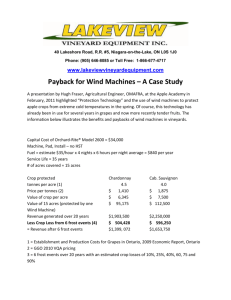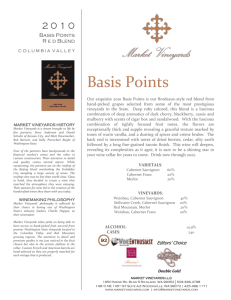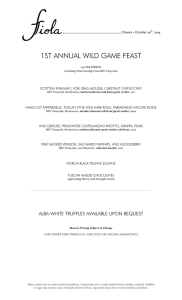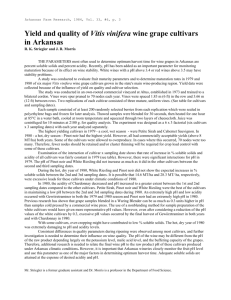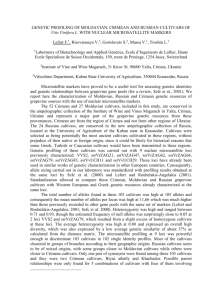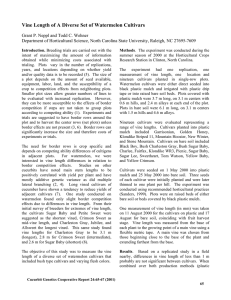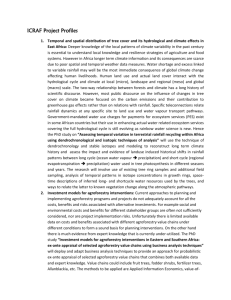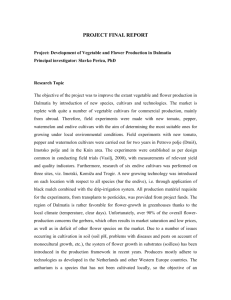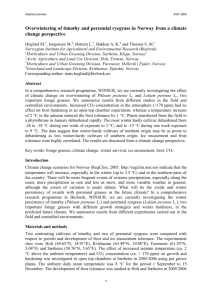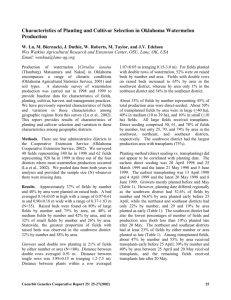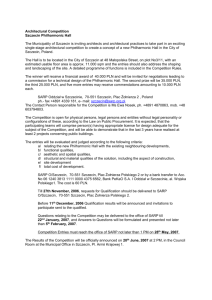poster_Chelpinski_Flick - congress 2012 VitiNord
advertisement
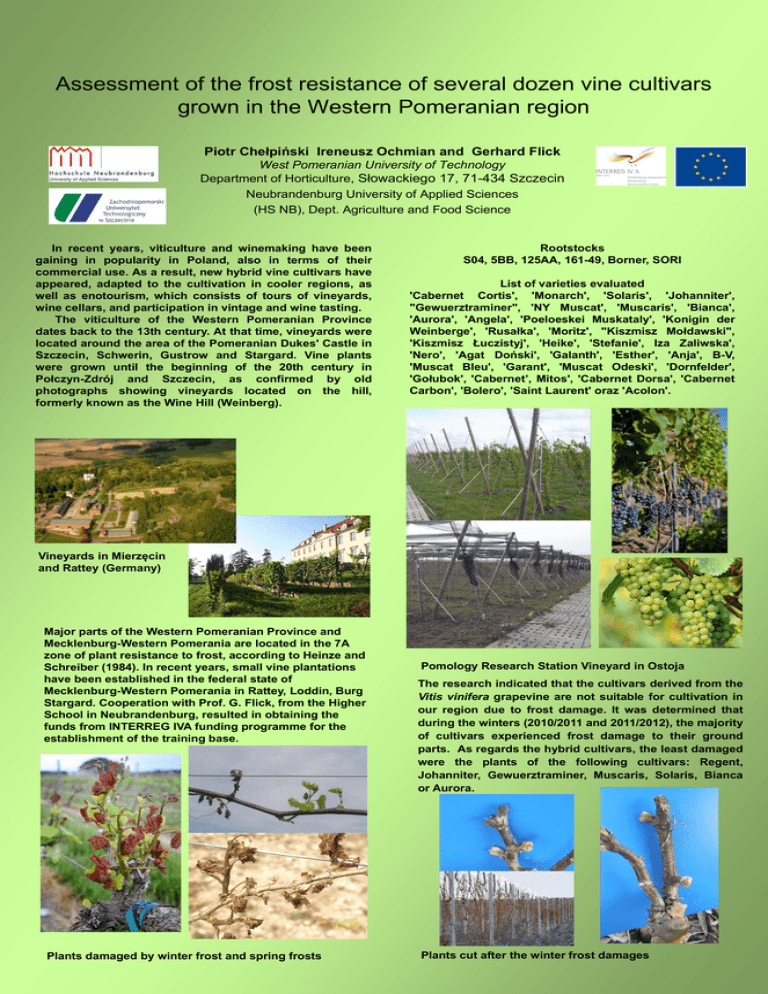
Assessment of the frost resistance of several dozen vine cultivars grown in the Western Pomeranian region Piotr Chełpiński Ireneusz Ochmian and Gerhard Flick West Pomeranian University of Technology Department of Horticulture, Słowackiego 17, 71-434 Szczecin Neubrandenburg University of Applied Sciences (HS NB), Dept. Agriculture and Food Science In recent years, viticulture and winemaking have been gaining in popularity in Poland, also in terms of their commercial use. As a result, new hybrid vine cultivars have appeared, adapted to the cultivation in cooler regions, as well as enotourism, which consists of tours of vineyards, wine cellars, and participation in vintage and wine tasting. The viticulture of the Western Pomeranian Province dates back to the 13th century. At that time, vineyards were located around the area of the Pomeranian Dukes' Castle in Szczecin, Schwerin, Gustrow and Stargard. Vine plants were grown until the beginning of the 20th century in Połczyn-Zdrój and Szczecin, as confirmed by old photographs showing vineyards located on the hill, formerly known as the Wine Hill (Weinberg). Rootstocks S04, 5BB, 125AA, 161-49, Borner, SORI List of varieties evaluated 'Cabernet Cortis', 'Monarch', 'Solaris', 'Johanniter', "Gewuerztraminer", 'NY Muscat', 'Muscaris', 'Bianca', 'Aurora', 'Angela', 'Poeloeskei Muskataly', 'Konigin der Weinberge', 'Rusałka', 'Moritz', "Kiszmisz Mołdawski", 'Kiszmisz Łuczistyj', 'Heike', 'Stefanie', Iza Zaliwska', 'Nero', 'Agat Doński', 'Galanth', 'Esther', 'Anja', B-V, 'Muscat Bleu', 'Garant', 'Muscat Odeski', 'Dornfelder', 'Gołubok', 'Cabernet’, Mitos', 'Cabernet Dorsa', 'Cabernet Carbon', 'Bolero', 'Saint Laurent' oraz 'Acolon'. Vineyards in Mierzęcin and Rattey (Germany) Major parts of the Western Pomeranian Province and Mecklenburg-Western Pomerania are located in the 7A zone of plant resistance to frost, according to Heinze and Schreiber (1984). In recent years, small vine plantations have been established in the federal state of Mecklenburg-Western Pomerania in Rattey, Loddin, Burg Stargard. Cooperation with Prof. G. Flick, from the Higher School in Neubrandenburg, resulted in obtaining the funds from INTERREG IVA funding programme for the establishment of the training base. Plants damaged by winter frost and spring frosts Pomology Research Station Vineyard in Ostoja The research indicated that the cultivars derived from the Vitis vinifera grapevine are not suitable for cultivation in our region due to frost damage. It was determined that during the winters (2010/2011 and 2011/2012), the majority of cultivars experienced frost damage to their ground parts. As regards the hybrid cultivars, the least damaged were the plants of the following cultivars: Regent, Johanniter, Gewuerztraminer, Muscaris, Solaris, Bianca or Aurora. Plants cut after the winter frost damages
